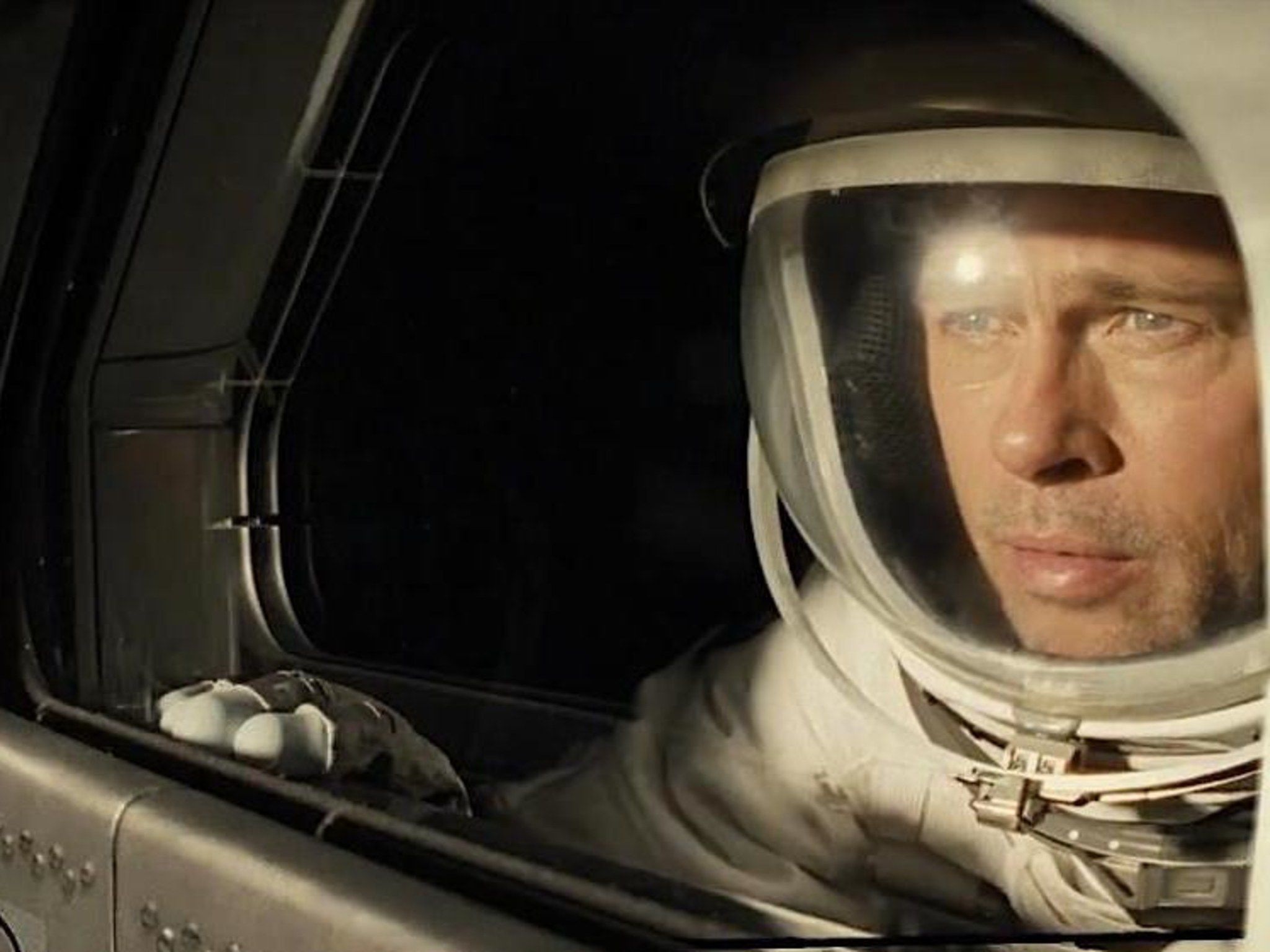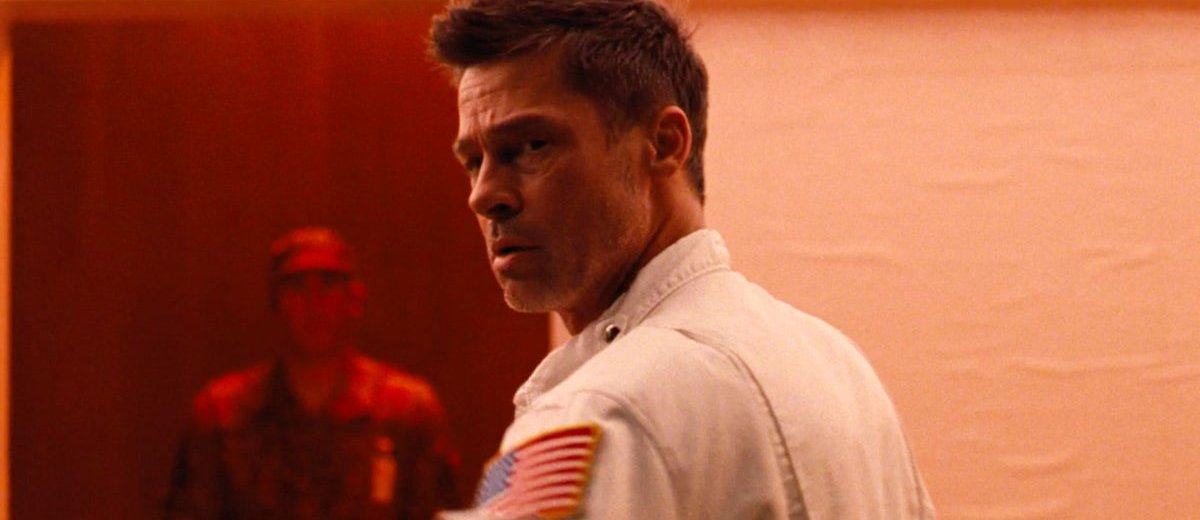Blog | Film review: Ad Astra

A couple of weeks ago, a friend of mine and I caught up to see a film. We’re both fans of the science fiction genre, so the much-hyped Ad Astra was an easy choice. We had heard murmurings that this might be the new Interstellar, which stirred giddy excitement, but sought to curb our enthusiasm by learning as little about the film as we could.
What a mistake that turned out to be.
If we had read even a single review, the first nugget of knowledge we would have gained is that Ad Astra is directed by James Gray, a gentleman who ruined another of our film nights a couple of years ago when we walked out of his stunningly bad The Lost City of Z.
We actually made it through all of Ad Astra, which I suppose is an improvement, but it was a close call. I deeply regret the 127 minutes of my life I dedicated to such an inexcusable waste of celluloid, and on any other occasion would be happy to repress all memory of it. However, I remain so offended by Gray’s destruction of not one but two of my scarce film nights, that I feel compelled to write about it here, in a blog famously about architecture cinema.
But rather than discuss the cinematic shortcomings of this wildly awful film, I intend to focus on the Donald Trump-like relationship it has with science, and examine some of the worst violations of scientific truths since Ellen Ripley saved herself from being sucked into a vacuum with the strength of her fingertips.
Do you even science bro?
Ad Astra is set in the near future, but anchors itself in the technological aesthetics of the present. Spacesuits look pretty much the same as they do now, spaceships are still launched with rockets, and air locks are still a thing. In other words, it looks like it’s based on real science. No Klingons here.
But apparently the film’s $100 million budget didn’t extend to hiring an astrophysicist to sound the alarm whenever its already tenuous connection to the truth snapped like a space elevator made from chewing gum. So what follows is an indignant review of its seven most shockingly awful moments (in chronological order).
There are plenty of spoilers, but don’t worry, you’re not going to see the film anyway.

1. Gravity on the Moon ain’t what it used to be
The scene: Brad Pitt and Donald Sutherland arrive on the Moon. Travel bags over their shoulders, they ascend an escalator and saunter through the spaceport.
The science: gravity on Earth is 9.8m/s2, but gravity on the Moon is just 1.6m/s2.[1] At best, Brad and Donald should bounce their way through the spaceport like Neil and Buzz. At worst, unless they’re both super comfortable suddenly weighing 16% of their usual weight, they would bounce their way straight into the ceiling and an unhealthy dose of brain damage.
The fix: install some handrails, Moon government.
2. You can’t skid to a smoking stop in space
The scene: Brad hitches a ride on a cargo spaceship travelling from the Moon to Mars. Halfway there, the ship’s captain receives a mayday call from another spaceship orbiting a nearby asteroid.
The science: since space is a vacuum, the only way an object like a spaceship can safely slow down is to fire its rockets in the opposite direction of its travel. Brad’s ride is well into its journey when the mayday call arrives, so it’s going very, very fast. Even assuming it’s storing enough fuel to decelerate to a complete stop, then accelerate back up to crushing velocity and decelerate again once it gets to Mars, it would be impossible to stop in time to help out without turning Brad and the ship’s crew into meat paste.
Bonus science #1: While undergoing the aggressive deceleration required to help the mayday call, which would create temporary and very powerful gravity inside their spaceship, Brad and the crew remarkably continue to float around weightless.
Bonus science #2: When Brad and the captain enter the distressed spaceship to lend a hand, they discover carnivorous space monkeys have taken over. The space monkeys eat the captain’s face off. Such bad script writing it can only be true.
The fix: ignore the mayday, captain.
3. Collect call from Mars to Neptune
The scene: Brad is on Mars. He goes to a special transmission room and sends a voice message to Tommy Lee Jones, who is on Neptune. Brad then hangs around in the transmission room waiting for Tommy’s response.
The science: even assuming Brad’s transmission laser is able to beam his message at Neptune at the speed of light, and Tommy’s spaceship is able to beam his response back at the same speed, light still takes around four hours to travel from Mars to Neptune.[2] Brad therefore hangs around in a tiny room without food, water or a toilet for a minimum of eight solid hours.
The fix: take a break, Brad.
4. We have a stowaway
The scene: Brad is on Mars but wants to go to Neptune to see Tommy. Unfortunately, the United States Space Command doesn’t want him to go. So Brad dives through a lake at the base of the spaceship that Command is preparing to launch to Neptune, climbs up the side of the ship as its rockets are firing and breaks in moments before it launches.
The science: the Martian permafrost is between 3.5-8km deep, which means there are no liquid lakes anywhere on the surface of Mars.[3]
Bonus science: Climbing up inside the launch tube of a spaceship as its rockets are firing = instant and fiery death.
The fix: I can’t even.
5. Life’s pretty fine in Neptune orbit
The scene: Tommy is living in a small spaceship orbiting Neptune, which he has called home from the past twenty years. There is no gravity on the spaceship.
The science: in zero gravity, Tommy’s bones should lose 1% of their density per month.[4] As he has lived in zero gravity for twenty years, or 240 months, his bone density should be negative 140%. This would make Tommy a roughly human shaped sack of jelly.
The fix: design your ship to spin along its axis, Tommy, and use centrifugal force to create the impression of gravity. Duh.
6. Surfing the rings
The scene: Brad needs to get back to his spaceship after visiting Tommy’s. Unfortunately, he forgot where he put his EVA shuttle. He climbs up to a slowly rotating radar dish on the top of Tommy’s ship, rips off a sheet of metal from its surface and, using the radar’s momentum, jumps off it. Brad’s jump is a good one, but the rings of Neptune stand between him and his ship. He uses his sheet of metal as a shield to protect him from harm.
The science: Brad’s ship is three or four kilometres from Tommy’s. Even assuming Brad has a superhuman jumping power that lends him incredible strength and accuracy, he still has to deal with the pesky rocks in Neptune’s rings.[5] The metal shield might stop the rocks from killing him, but each impact (of which there are many) would still retard or deflect his path of travel, leaving him stranded to die.
The fix: don’t lose your shuttle next time, Brad.
7. Everything can be solved with a nuclear bomb
The scene: Brad makes it back to his spaceship, but doesn’t have enough fuel for the return journey to Earth. Fortunately, he left a nuclear bomb on Tommy’s spaceship so eyeballs the direction back to Earth, waits for the bomb to explode and rides its pressure wave all the way back home.
The science: sweet baby Jesus, where do I start? First, space is a vacuum so a nuclear explosion does not create any form of pressure wave at all. Second, even assuming this isn’t true, the bomb would only create a few moments of acceleration followed by endless years of nothing, not nearly enough velocity to make the trip without dying of old age. Third, Neptune is 4.4 billion kilometres from Earth and Brad lines up his position between the explosion and Earth by eye.[6] If Brad is even 0.1 degree out, he would miss Earth by 7.5 million kilometres, which is around twenty times the distance from the Earth to the Moon.[7]
Bonus science: Brad of course makes it back to Earth. As a symbol of his gruelling return journey of many billions of nuclear bomb-fuelled kilometres he has still managed to grow nothing more than a short and stylish beard.
The fix: don’t fly to Neptune unless you’ve got the juice to get back home, Brad.

I give this shockingly awful, steaming mess of a film zero stars and ask: who the hell keeps giving James Gray money? Definitely do not see it.
Footnotes:
- Matt Williams; How strong is gravity on other planets?; Phys.org; January 2016.
- Distances between planets; The Planets; accessed October 2019.
- Duwayne Anderson; Subsurface ice and permafrost on Mars; NATO ASI Series Volume 156; Texas A&M University; 1985
- Laurie Abadie, Charles Lloyd and Mark Shelhamer; The human body in space; NASA Human Research Program; accessed October 2019.
- Fraser Cain; The rings of Neptune; Universe Today; March 2012.
- Distances between planets; The Planets; accessed October 2019.
- How far away is the moon?; NASA Space Place; accessed October 2019.
Images:
- Brad Pitt in Ad Astra; sourced from Variety.
- Brad Pitt in Ad Astra; sourced from Esquire.
- Brad Pitt in Ad Astra; sourced from The Playlist.